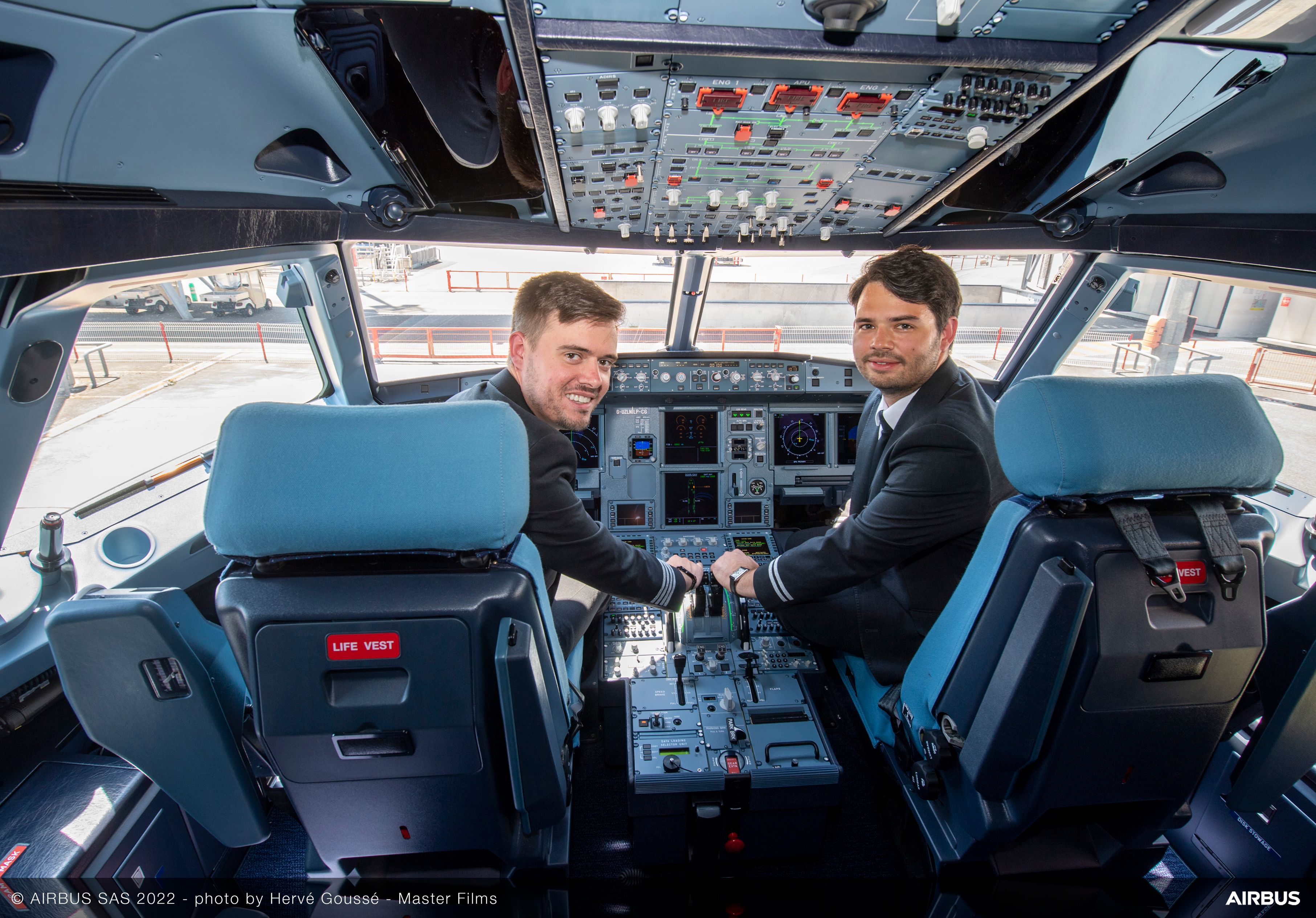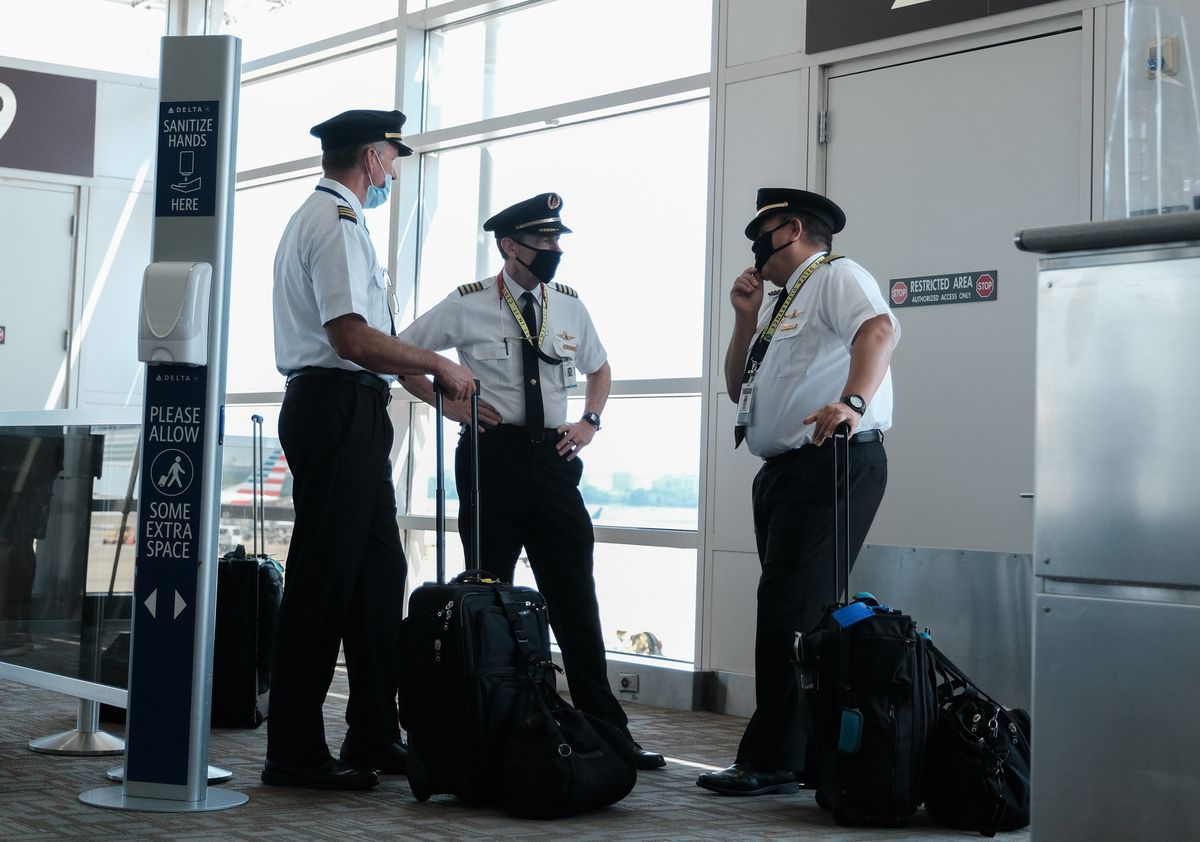It is pretty rare – at least at large airlines – for pilots to fly together consistently. This article will focus on a few of the factors that measure the likelihood of short-haul captains and first officers flying together on multiple occasions.
Perhaps the largest influencer that determines the probability of two pilots being paired multiple times is the size of the airline. The three largest airlines in the United States (American Airlines, Delta Air Lines, and United Airlines) all have well more than 10,000 pilots.
These pilots are spread across multiple fleets of aircraft, and pilots can only fly with colleagues who are type rated and approved to fly the same aircraft that they currently fly. For example, the captain of an Airbus A320 cannot fly with a first officer on the Boeing 737 fleet. One of the pilots would have to train for and be approved to fly the others’ aircraft in order to fly together.
Photo: Airbus
Home base plays a big role
Another factor that determines pilots’ likelihood to fly with each other on multiple occasions is the city in which they are based. Generally speaking, pilots start and end most of their trips at their domicile. This means that a captain based in Los Angeles is much more likely to fly with a Los Angeles-based first officer. That L.A. captain might fly with a first officer based in New York, but the chances of that happening are significantly smaller.
In my personal experience, 80-90% of the flights I work on are with captains from my domicile. I really only fly with captains from other crew bases when I fly partial trips or deadhead out of my base or if the captain has done the same. As you can imagine, this experience differs depending on a pilot’s bidding preferences or the airline’s crew scheduling strategy.
Some captains are “check instructors” within their company–this influences who they fly with. Check instructors are specially qualified captains who are trained to fly with and, in most cases, evaluate new pilots. These pilots might be new captains who are upgrading or first officers who are new to the aircraft or to the company.
If an airline is hiring a lot of new pilots (as is currently the case in many aviation markets), check pilots are likely to be used almost exclusively for these training purposes. This means that they are even less likely to fly with the same person twice.
Consistency increases chances
What would make a captain and first officer more likely to fly with each other on multiple occasions is if they have a senior status in their domicile and consistently preference the same type of schedule from month to month. At almost every airline, crew schedules are awarded by preference in order of seniority (the time a pilot has been at the airline). If a captain and first officer in the same domicile are both senior among their colleagues and prefer to fly mid-week, for example, they are vastly more likely to fly with each other.
I’ve talked to plenty of long-tenured captains at large US-based airlines who have a trip with another very senior first officer who they have never met. This is why standard operating procedures are so important. Strong training and adherence to SOPs create symmetry among an entire pilot group. This allows airlines to pair any captain and first officer together. This phenomenon is one of the most unique aspects of being a pilot: being a highly trained professional yet working with different people in the same job on a weekly basis.
[ad_2]
Source link




